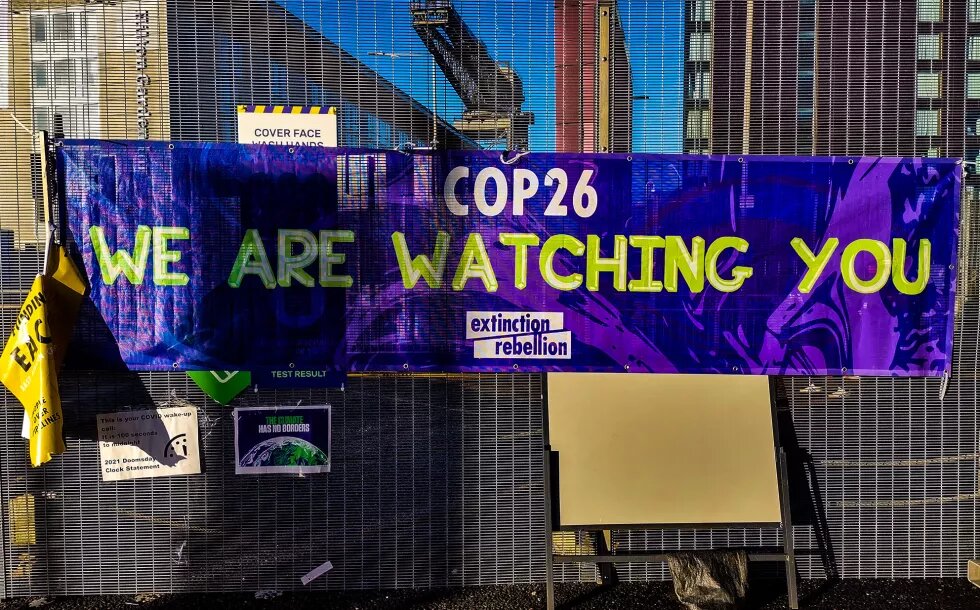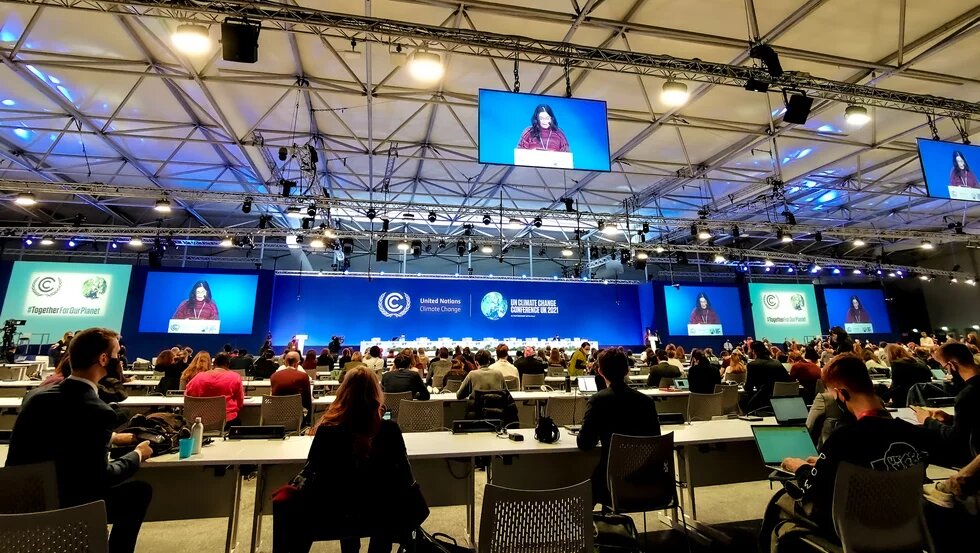
COP26 in Glasgow, postponed by one year to 2021 due to the COVID-19 pandemic, represented the first major test of the Paris Agreement. Given the significance of COP26, it was essential that it be inclusive so that the views and experiences of civil society, youth, indigenous peoples, trade unions, especially those from the Global South who are already experiencing climate impacts, be heard and considered in the negotiations and decision-making. The host country of COP26, the United Kingdom had declared that COP26 would be the most inclusive COP. The noble rhetoric however did not translate into actual inclusivity, especially for the Global South.

Leading up to COP26, delegates and observers from the Global South had to navigate complex travel regulations due to the pandemic. Global vaccine inequity due to countries in the Global North being unwilling to share vaccines equitably with the Global South made it more challenging for delegates and observers from developing countries including ASEAN member states to be vaccinated in time for COP26 and therefore comply with pandemic-induced travel regulations intended to preserve public health. Civil society observers including youth from Southeast Asia and elsewhere in the Global South faced other obstacles to participation at COP26 such as tough rules for obtaining accreditation badges as well as high travel and accommodation costs.
Civil society observers from Southeast Asia and the Global South who did make it to Glasgow then found other barriers to inclusivity at COP26. Observers had to endure long lines in the cold and wet Glaswegian weather to clear security checks to even get into the COP venue. After entering the venue, observers were then faced with a ticketing system announced just before the start of the World Leaders Summit. The limited supply of tickets for observers severely limited their access to the World Leaders Summit, hindering those who had travelled long distances and bearing high travel costs from being able to directly hold their leaders accountable for more ambitious and substantive climate action. Furthermore, due to public health limitations on the capacity of the COP26 venue, some observers could not even enter the venue and were instead encouraged to follow proceedings via the virtual COP platform. The absurdity of having travelled all the way to Glasgow only to have to follow COP proceedings online on a buggy platform generated further frustration among observers, especially those from Southeast Asia and the Global South.
Insufficient NDCs by Southeast Asian countries
Parties to the Paris Agreement had agreed to review and revise their Nationally Determined Contributions (NDCs) every five years hence countries had to submit revised NDCs in the lead up to COP26. All 10 member states of the Association of Southeast Asian Nations (ASEAN) submitted updated NDCs in accordance with their commitments under the Paris Agreement. The revised NDCs submitted by ASEAN member states and other parties to the Paris Agreement were however insufficient to achieve the more ambitious Paris Agreement goal of avoiding global warming exceeding 1.5 degrees over pre-industrial levels. Hence one of the key issues to be discussed at COP26 was raising climate ambition to achieve the goal of not exceeding 1.5 degrees of global warming above pre-industrial levels, which is critical in order to avoid catastrophic climate impacts as highlighted by the Intergovernmental Panel on Climate Change (IPCC).
Hopeful announcements
Once COP26 proceedings got under way, the summit seemed to start on a hopeful note with a series of promising announcements. Prime Minister Narendra Modi of India notably announced that the vast developing country he leads would aim to cut its carbon emissions to net zero by 2070. This was an important signal of climate ambition from the Global South that needed to be matched by corresponding gestures from the Global North on issues such as climate finance so that developing countries could have the resources needed to cut emissions and adapt to climate change without sacrificing the welfare of their citizens.
Another important announcement from the early days of COP26 was a global pledge to halt and reverse deforestation by 2030. Significantly for Southeast Asia, Indonesia, home to the third largest area of rainforests in the world, was one of the early signatories to the deforestation pledge. Activists however cautioned that previous international deals to stop deforestation had failed to meet their objective, and the details of the latest pledge still needed to be ironed out. The credibility of the Glasgow Leaders’ Declaration on Forest and Land Use was further undermined when days after Indonesia signed onto the pledge, the country’s Environment Minister declared that it was inappropriate and unfair to force Indonesia to end deforestation by 2030 as Indonesia still needed to develop economically.
While the first week of COP26 was marked by a flurry of announcements from the World Leaders Summit, and pledges on halting deforestation and cutting methane emissions globally, COPs are judged by their outcomes and the final decisions from Glasgow achieved some progress but still left much to be desired, especially for developing countries in Southeast Asia and elsewhere. As of the end of COP26, NDCs submitted by countries still put the planet on track for 2.2 degrees of warming by the end of the century, according to analysis from Climate Action Tracker. Developing countries in Southeast Asia and beyond will bear the worst consequences of excessive global warming. Three ASEAN member states, Myanmar, Philippines, and Thailand had already been ranked among the countries most at risk from climate impacts from 2000 – 2019 in the global Climate Risk Index published by Germanwatch. These and other Southeast Asian countries will be at even greater risk from climate impacts as the planet continues to warm. The final decision from COP26 did call on countries to “revisit and strengthen” their 2030 targets by the end of 2022 to align them with the Paris Agreement’s temperature goals. The world will need to wait another year to know whether more ambitious climate action will be taken.
The challenges of decarbonizing and developing at the same time
In order to undertake more ambitious climate action, developing countries in Southeast Asia and beyond will require significant climate finance. As of COP26, developed countries had failed to honor their pledge made in 2009 of delivering $100 billion of climate finance a year for developing countries by 2020 and through 2025. The final outcome from Glasgow indicated some progress on climate finance, reiterating that developed countries still needed to honor the $100 billion a year pledge while achieving agreement on a robust process to develop a new post-2025 climate finance goal that is expected to be determined by 2024. Significantly for Southeast Asian and other developing countries that need to build resilience against climate impacts, in Glasgow, developed countries agreed to double funding for adaptation by 2025. However, as climate impacts continue to increase, the growth in adaptation funding may not be keeping pace with the rising climate adaptation needs in developing countries in Southeast Asia and beyond that face the challenges of decarbonizing while developing economically and simultaneously building resilience against climate impacts that they are already experiencing.
Loss and Damages
Another issue on which limited progress was achieved in Glasgow but with outcomes that ultimately do not meet the real needs of developing countries was Loss and Damage. Leading up to COP26, there was a drive from the Climate Action Network (CAN) (a network of civil society and non-governmental climate organizations) and its partners to push developed countries to pay up for climate Loss and Damage. They succeeded in drawing media attention to the issue. Southeast Asian countries such as the Philippines have already experienced extensive loss and damage from climate change such as when Typhoon Haiyan struck in 2013 and killed over 6,000 people and caused approximately $2 billion in damages. At COP26, the issue of Loss and Damage finance was picked up by developing countries. The G77 and China negotiating bloc that includes all ASEAN member states, put forward a proposal for a financing facility for climate Loss and Damage. This proposal was ultimately rejected and the final decision at COP26 was to set up a dialogue to discuss loss and damage funding and to operationalize and finance the Santiago Network on Loss and Damage that will catalyze technical support on the issue.
While it was progress that the issue of Loss and Damage finally became central to negotiations at a climate COP and is recognized in the outcome of COP26, Southeast Asian states such as the Philippines and other developing countries that have already experienced climate Loss and Damage and which are at risk of experiencing more severe losses and damages in the years ahead need much more than technical support. It is imperative for climate vulnerable countries in Southeast Asia and beyond to continue working with their civil society allies to push developed countries that have contributed the most to climate change to pay up for Loss and Damage.
Still a lot of work to be done
In conclusion, while some progress was achieved at COP26, the outcomes do not match the gravity of the intensifying climate crisis. As Southeast Asia is one of the world regions most at risk from climate change, it is imperative for ASEAN member states to continue working with other developing country and civil society allies to pressure developed countries to deliver on climate finance for mitigation and adaptation and also to pay for the losses and damages that are already being experienced at current levels of global warming. Simultaneously, civil society in Southeast Asia also needs to continue holding governments in the region accountable for their climate commitments, and educate and mobilize Southeast Asian public to push for more ambitious climate action from ASEAN member states. There is much work to be done by Southeast Asian governments and civil society in order to help achieve ambitious and substantive outcomes at COP27 in Egypt in 2022.
__
Julian Theseira is a Climate Activist and Policy Researcher from Malaysia.
The views expressed in this article are not necessarily those of Heinrich Böll Stiftung.




